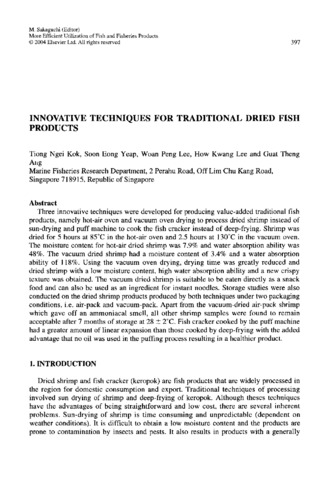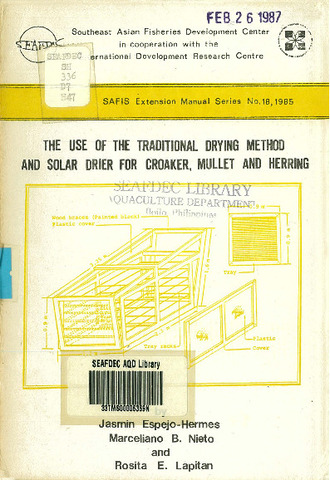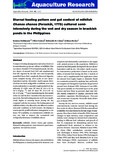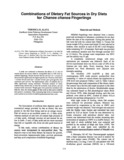Innovative techniques for traditional dried fish products

View/
Request this document
Date
2004Page views
1,121Metadata
Show full item recordCited times in Scopus
Share
Abstract
Three innovative techniques were developed for producing value-added traditional fish products, namely hot-air oven and vacuum oven drying to process dried shrimp instead of sun-drying and puff machine to cook the fish cracker instead of deep-frying. Shrimp was dried for 5 hours at 85°C in the hot-air oven and 2.5 hours at 130°C in the vacuum oven. The moisture content for hot-air dried shrimp was 7.9% and water absorption ability was 48%. The vacuum dried shrimp had a moisture content of 3.4% and a water absorption ability of 118%. Using the vacuum oven drying, drying time was greatly reduced and dried shrimp with a low moisture content, high water absorption ability and a new crispy texture was obtained. The vacuum dried shrimp is suitable to be eaten directly as a snack food and can also be used as an ingredient for instant noodles. Storage studies were also conducted on the dried shrimp products produced by both techniques under two packaging conditions, i.e. air-pack and vacuum-pack. Apart from the vacuum-dried air-pack shrimp which gave off an ammoniacal smell, all other shrimp samples were found to remain acceptable after 7 months of storage at 28 ± 2°C. Fish cracker cooked by the puff machine had a greater amount of linear expansion than those cooked by deep-frying with the added advantage that no oil was used in the puffing process resulting in a healthier product.
Suggested Citation
Kok, T. N., Yeap, S. E., Lee, W. P., Lee, H. K., & Arig, G. T. (2004). Innovative techniques for traditional dried fish products. In M. Sakaguchi (Ed.), More Efficient Utilization of Fish and Fisheries Products: Proceedings of the International Symposium on the Occasion of the 70th Anniversary of the Japanese Society of Fisheries Science, Kyoto, Japan, 7-10 October 2001 (Vol. 42, pp. 397–406). Elsevier. https://doi.org/10.1016/S0167-4501(04)80039-6
Subject
Collections
Related items
Showing items related by title, author, creator and subject.
-
The use of the traditional drying method and solar drier for croaker, mullet and herring
Espejo-Hermes, Jasmin; Nieto, Marceliano B.; Lapitan, Rosita E. (Secretariat, Southeast Asian Fisheries Development Center, 1985-02)This study is part of the research on Appropriate Technology in Fish Processing, financially supported by the National Science Development Board (now NSTA) from 1978-1981. -
Diurnal feeding pattern and gut content of milkfish Chanos chanos (Forsskål, 1775) cultured semi-intensively during the wet and dry season in brackish ponds in the Philippines
Kühlmann, Kai-Jens; Focken, Ulfert; Coloso, Relicardo M.; Becker, Klaus (Blackwell Publishing, 2008)To improve feeding management and reduce feed cost in semi-intensive grow-out culture of milkfish (Chanos chanos, Forsskål 1775) in brackish ponds, the relative shares of natural food (NF) and supplemental feed (SF) ingested ... -
Combinations of dietary fat sources in dry diets for Chanos chanos fingerlings
Alava, Veronica R. (Asian Fisheries Society, 1986)A study was conducted to determine the effects of 1:1 ratio of several dietary fat sources added in semipurified diets at 10% level on milkfish fingerlings. Results showed that the cod liver oil + coconut oil diet promoted ...




